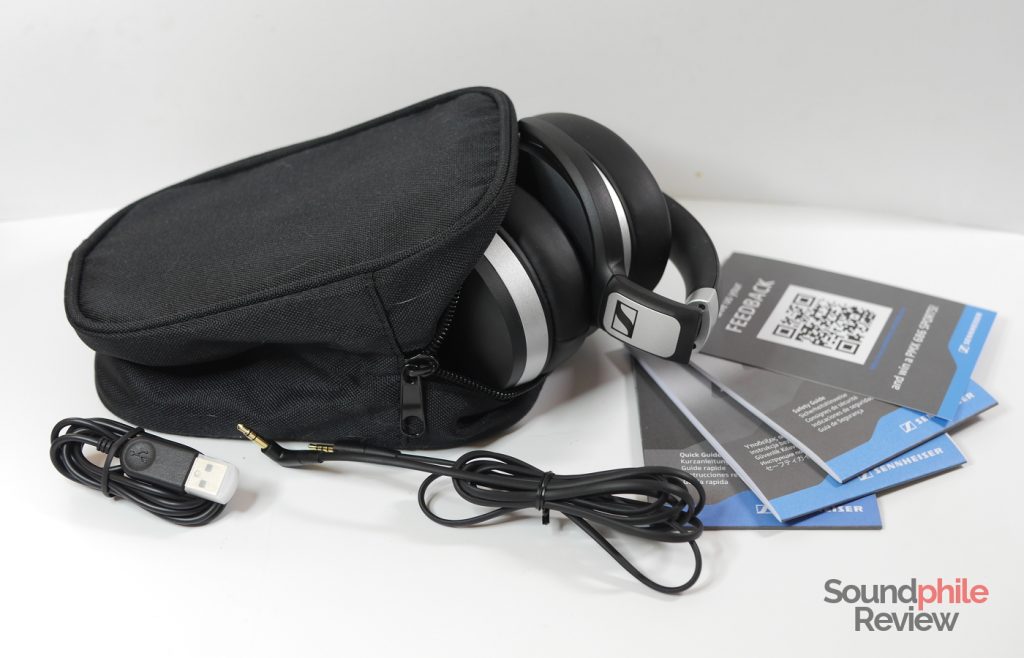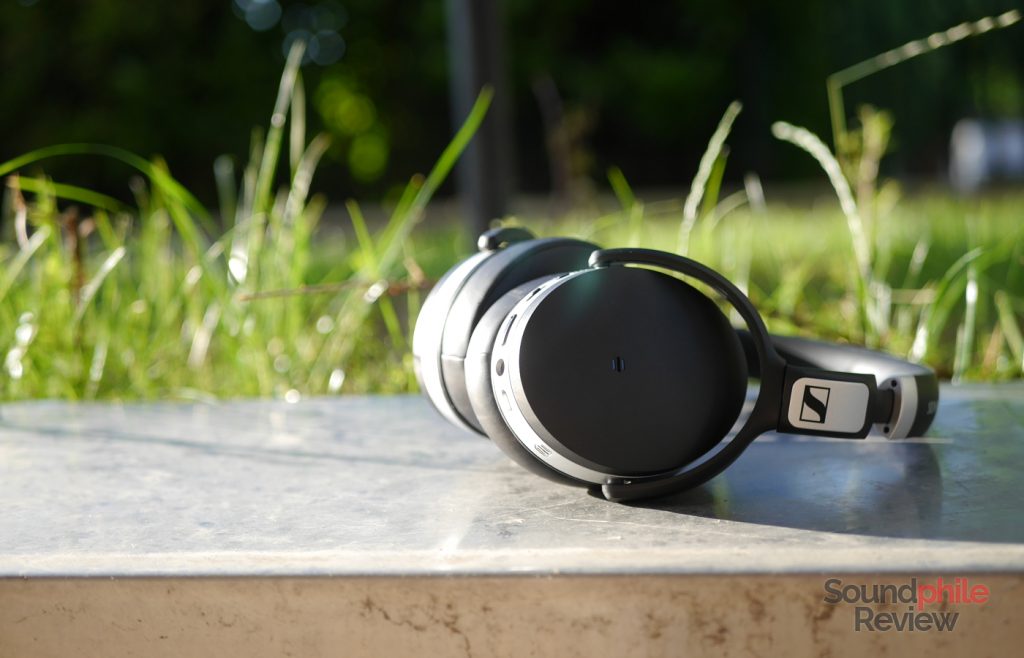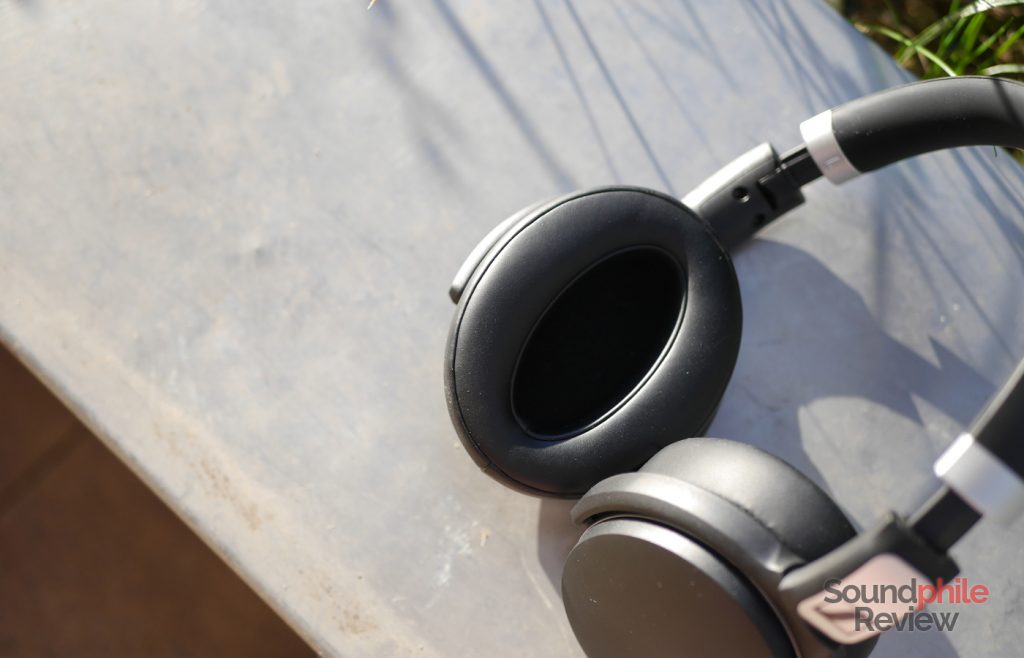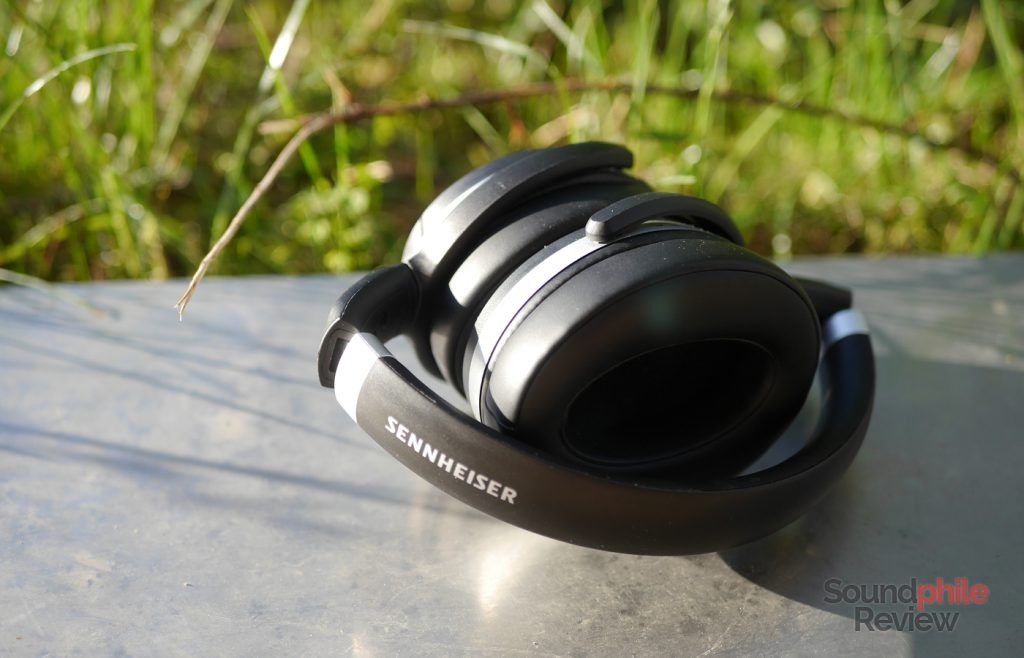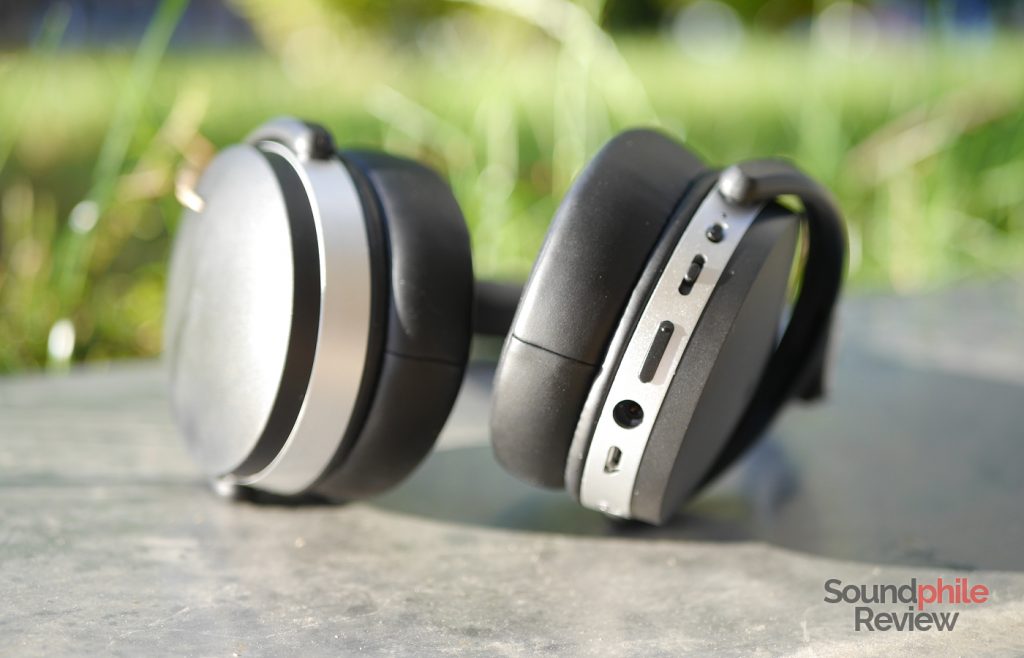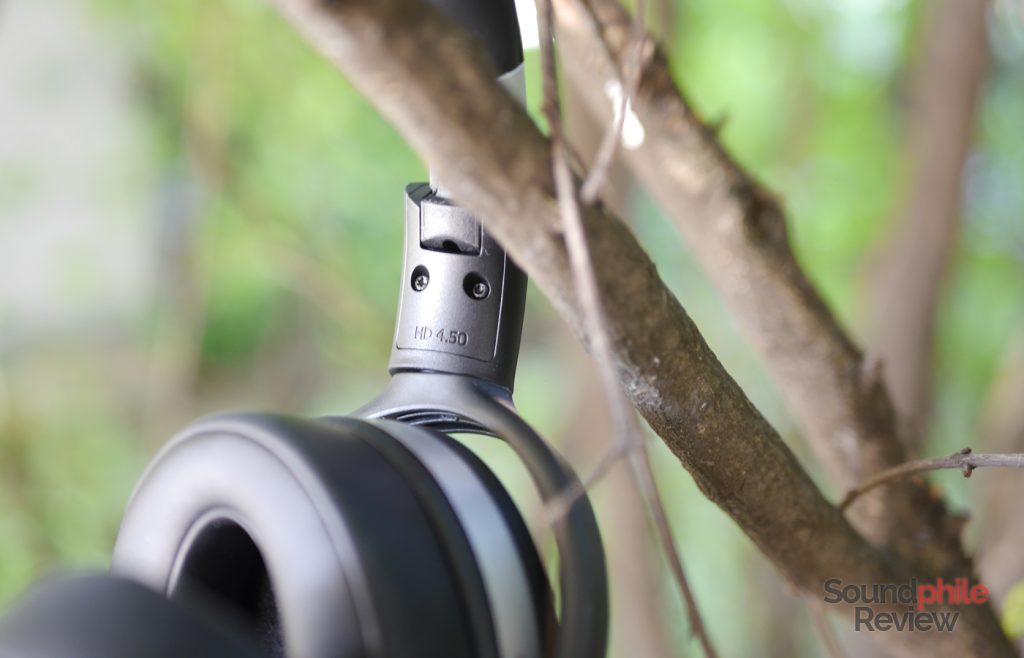Introduction: Beyerdynamic, a name in all fields of audio that
truly needs no introduction. In fact, since it has been established in
1924, the oldest currently still operating audio company, they have had
their go at products ranging from microphones, home audio, wireless
systems, and of course personal audio. My father even used a
Beyerdynamic mic when he performed with his band in the 70's.
Beyerdynamic in the headphone world has had their share of ubiquitous
names, with popular models like the 770 and 990 families that until now
provide great sound and great value to many music enthusiasts around the
world, but what we have here today is the Amiron wireless, one of their
entries into the current movement into the wireless audio spectrum. And
speaking about wireless audio, it's a very interesting market where for
the longest time wireless audio has been associated with poor sound
quality, but with the advent of more and more high-quality codecs such
as Aptx HD and LDAC promising, and for the most part, providing
high-quality wireless audio solutions with a, for me at least, obviously
discernable improvement over the likes of SBC. So what does the Amiron
offer? Well for a start there's the circumaural/over-ear form factor, an
important distinction in a market generally proliferated with
supraaural/on-ear varieties. Additionally, these feature the Tesla Technology
that is implemented in their other popular models like the Xelento,
Amiron Home, T1, 1770, and 1990. On top of that, the Amiron Wireless
offers Aptx and Aptx HD codec support and the Beyerdynamic MIY app that
with the help of Mimi a German hearing technology company will measure
your hearing and then adapt the sound output of the Amiron to achieve
the "optimum" frequency response in wireless applications. At an
eye-opening $699 what does the Amiron bring to the table? Read on to
find out.

Specifications:
Transducer type . . . . . . . . . . . . . . . . dynamic, Tesla
Operating prinicple . . . . . . . . . . . . . closed
Frequency response . . . . . . . . . . . . . 5 – 40,000 Hz (wired
operation)
Nominal impedance . . . . . . . . . . . . . 32 Ω
Nominal SPL with jack plug cable . . 100 dB SPL (1 mW / 500 Hz)
Nominal power handling capacity . . 200 mW
T.H.D . . . . . . . . . . . . . . . . . . . . . . . . < 0.05% @ 500 Hz
Sound coupling to the ear . . . . . . . . circumaural
Cable length and connector. . . . . . . 1.2 m, detachable,
4-pole mini stereo jack
(3.5 mm)
Bluetooth version . . . . . . . . . . . . . . . 4.2
Frequency range. . . . . . . . . . . . . . . . 2.4000 – 2.4835 GHz
Power class . . . . . . . . . . . . . . . . . . . 2.0
Supported profiles . . . . . . . . . . . . . . HSP, HFP, A2DP, AVRCP, GAVDP
Supported codecs . . . . . . . . . . . . . . aptX™, aptX™ LL, aptX™ HD,
AAC, SBC
Operating range. . . . . . . . . . . . . . . . up to 10 m
Battery runtime . . . . . . . . . . . . . . . . > 30 hrs.
Charging time . . . . . . . . . . . . . . . . . 2 hrs.
Battery capacity . . . . . . . . . . . . . . . . 1050 mAh
Charging port . . . . . . . . . . . . . . . . . USB-C
Operating temperature. . . . . . . . . . . 0 – 40 °C
Weight without cable. . . . . . . . . . . . 380 g
Packaging and Accessories: The Amiron comes in a rather large
box, that is, however, to be expected given the size of these
headphones. On the box is the basic specs of the headphones as well as
some images of the product, opening the box reveals the large molded
clamshell case of the Amiron. Inside you find the Amiron, a USB A to USB
Type-C charger cable, and a 3.5mm cable with inline controls. The
molded clamshell case is very nice with a soft touch finish and the
Beyerdynamic logo tag on the front and a black zipper and is very sturdy
and should protect the Amiron from bumps and light falls. The inside
has a small net mesh pocket to place little objects, though it is a bit
too small for either cable to be placed in there. The cable quality for
both the USB and the 3.5mm cable is about the same, as they both have
the same type of coating a smooth, slightly rubbery but not tacky
coating that does, however, prevent either cable from tangling. Overall
the Amiron has a utilitarian package that provides everything you need
in the package without anything superfluous. Some might argue that the
accouterments are lacking given the premium price, but as long as the
rest of the product delivers, I personally see no issue with it.


Build Quality and Design: The build quality is superb. Starting
with the headband there is a metal frame, that is more than adequately
padded and lined with breathable mesh fabric on the underside while the
top is layered with an Alcantara finish with the Beyerdynamic logo
stamped on top. The Alcantara is done in a dark gray. The headband
transition into the plastic piece where the yoke of the headphones
adjust from, its a satin piece of plastic with another printing of the
Beyerdynamic logo on the outside, and Left/Right markings as well as
other model information printed inside, with the model number is
engraved in gold paint to add an extra touch of class while cabling
travels from the earcup to this piece to travel under the headband. The
yoke itself is a single piece of brushed metal that connects to a
rotating plastic joint on both earcups that allow a couple of degrees of
tilt up and down and allows 11 steps of adjustment for overall size.
The earcups themselves are done in mostly in an almost gunmetal gray,
with silver metal adorning a ring around the main face of each earcup.
The earpads are of the velour type, and the drivers have a fabric cover
similar to that of the headband. Overall a premium but understated
design with hints of industrial influences here and there, that
primarily focuses on function, being a wireless and of course possibly a
more mobile headphone, it eschews heavy materials like metal earcups to
reduce the weight if one were to wear it on the go, or for long periods
of time. To round things out the right earcup houses a USB-C charging
port, a 3.5mm jack, and the entire face of the cup is a touch panel for
use when in Bluetooth mode as well as a power/connect button that also
has an LED that will indicate power status, as well as pairing status of
the headphones. With no gaps, creaky parts, or anything that seems
loose or ill-fitting, there really isn't anything you can point out from
these except that they are exceptional.


Fit and Isolation: The Amiron has a moderate to light clamping
force that does not wear on you even over longer periods of wear. This
combined with the adequate padding on the earcups and headband provides a
good comfort experience that couples with adequate breathability.
However due to the lighter clamping force even though it is closed the
isolation isn't as good as other closed back models, so this may be a
trade-off and may be a pro or a con depending on your individual use
case.
Connectivity and Interface: The Amiron supports SBC, AAC, Aptx,
Aptx HD, and Aptx LL, which basically covers most the popular audio
codecs with the only real notable exception being Sony LDAC, this means
that for basically any device out there the Amiron will work, and for
most modern devices the Amiron will work very well since Aptx HD support
is becoming more commonplace, and with the LL Low Latency Standard
included using the Amirons for streaming is a treat since it while
ensuring that lip movements are synced with the audio. With 8 total
devices it can pair within memory the connection interface and procedure
is very simple and intuitive with a single button controlling both
power and pairing with lights to indicate if it is in pairing mode, with
matching audio prompts on pairing, battery percentage, and codec used
alternatively if your devices support NFC the Amiron can also connect
via that method, and you don't even need to set it to pairing mode to do
so. The Amiron also features a right earcup touchpad that allows you to
control playback as well as other functions, double taps to play or
pause, swipes forward and backward to skip or go back on tracks, a swipe
and hold to fast forward or rewind the current track, swipe up and down
for volume control, and even one second long taps to answer or end
calls, two seconds to reject one, and a one second hold to bring up the
supported virtual assistant like Google, or Siri if supported by your
device. I found the experience with the touchpad very pleasant, not
buggy or finicky like I had feared. You can also adjust the touch
sensitivity in the MIY app which I discuss below.


MIY App: The MIY app is the companion app that comes with
Beyerdynamic Bluetooth devices that have a few capabilities, first and
foremost the sound optimization feature that will take your age, and a
listening test and will tailor the sound. The other features are
software updates and listening monitoring that is there to make sure you
don't over-fatigue your ears. The app has a clean look that makes it
very pleasant coupled with a generally uncluttered interface that makes
navigating the different options a breeze, though the pairing of the
headphones in the app can sometimes be finicky, and non-intuitive which
I'm sure can simply be addressed in software updates. Overall I do like
the MIY app because it is a companion app that isn't all fluff and
gimmicks and makes managing Bluetooth devices even easier.
Sound: I listened to the Amiron both wireless and wired over a
myriad of devices almost exclusively using Aptx or Aptx HD for Bluetooth
ranging from laptops to phones like my LG G6, or OnePlus 5T, and iPhone
7s+, to DAPs like the Hiby R6. Wired they were plugged into the R6, G6,
ifi xDSD, or the xDSD amped with the Massdrop CTH the Amiron is very
easy to drive and remained consistent throughout the different devices I
plugged it into. I originally planned to split my sound impressions
between wired and Bluetooth, but remarkably the sound whether wired or
wireless remained almost completely consistent, the MIY app sound
optimizations notwithstanding which for the most part make the mids a
little fuller and forward at 100%, but I will get to that in a second,
the sound signature of the Amiron is balanced and natural exhibiting
accurate bass, full mids, and natural treble. Back to the MIY app, it
conducts a listening test with test tones that takes about 6 minutes and
optimizes the sound, when in the app you get an option to adjust the
optimizations from 20% to 100% though I wish a 0% slider was available
for convenience. Detailed sound impressions below.

Bass: The bass on the Amiron is full, and well extended with a
quick attack and a moderate decay that keeps it precise and natural,
hitting all the notes well and providing a good sense of rumble and
impact, while still having articulation for faster double bass tracks.
In Love by Lana Del Rey the prominent bass drum hits are felt but don't
linger too long or drag, and the bass line of David Cook's rendition of
Day Tripper has a fullness and texture, without ever feeling bloated in
relation to the other signatures. All of this is a stark contrast to
many commercially available Bluetooth headphones with dark signatures or
even bloated bass that really go and mask the overall sound. The Amiron
doesn't have any of those qualities and instead just providing enough
bass to keep the sound from being boring but at the same time providing
such great quality in terms of texture and refinement.
Mids: The midrange, on the other hand, is overall transparent if
maybe a touch behind the bass without being crowded out. It reproduces
vocals and instruments with very good timbre as well as backing it up
with good technical ability. In City of Stars, a simple arrangement with
nothing for the mids to hide behind the vocals are clear and detailed
with good definition and crispness to the reproduction, the piano
accompaniment is similarly well done, providing a pleasant fullness to
each individual notes as they cut through the chords of the song. Moving
on to something more aggressive What A Catch, Donnie by Fall Out Boy,
the Amiron continues to deliver in both the solemn and basic intro to
the more complex pieces in the chorus, and bridge, song elements don't
get lost in the shuffle and manage to be rendered with articulation even
on secondary song elements. The transition between bass and midrange as
well as that to the treble are smooth and no awkward and disjointed
dips or peaks in those areas could be detected.

Treble: The treble presents itself as clean, crisp, and with good
extension. I found no manifestations of sibilance or uncomfortable
peaks in the usual areas I expect them to be, and overall round out the
signature with great clarity that brings an overall tonal balance to the
headphones. In Hibike by Yokoyama Masaru the piano and string parts in
this instrumental exhibit the sparkle of the top end on the headphones
with each note resonating and lingering just a bit before they fade
away. There is good overall air and that lends positively to the spacing
of the music presented and just lifts everything to let the individual
components breathe.
Presentation: This is another area where the Amiron shines, all
around the technical aspects are excellent. The layering of notes even
in complex arrangements is superb with the strings, winds, and
percussion harmoniously combining. The spatial presentation is accurate
and 3D staging is very good being able to present a somewhat holographic
image of the music, however, it doesn't feel artificial or hollow like
some may do, it's just right with auxiliary notes like tambourine shakes
just at the far edges of the spatial field. Consequently, the
soundstage presents good width as well a depth that is both partly in
concert as to the previously mentioned staging, and when listening to
especially spatially tracked recording it can really express the
capability.
Conclusion: The Amiron is an impressive accomplishment by
Beyerdynamic putting together a headphone that excels both wired or
wireless and with a sound signature that is natural but has enough life
to be engaging, without trying to mask any deficiencies with muddled
software, at least that's what the wired performance delivered. So the
sound is nigh unassailable in the realm of Bluetooth options, and at the
least can stand on its own two feet vs traditional wired options. But
in addition to that, it also brings together a bevy of convenience
features and an overall sense of quality fit and finish that leaves
little to be desired. Looking at what is left to be desired, the lack of
the ANC is a shame at this price point especially with ANC being the
new "it" feature to look for in Bluetooth headphones, it would have been
something that would have undoubtedly raised the value proposition of
the Amiron, and really is something that can't be ignored especially
when they do already implement some "secret sauce" with the MIY app. But
aside from that there really isn't much to pick at the Amiron on, the
sound is sublime, the build is superb, battery life that usually met at
least 30 hours, and the design is attractive but not gaudy, it is
understated in how it exudes its premium nature, and personally that
aesthetic is something I prefer, but I know is different for everyone.
Overall the Amiron provides a great package for those looking for as
little compromises in sound as possible at this point in time, something
with a very traditional sound profile that focuses on quality first,
and if you're in the market for simply the best sounding over ear
Bluetooth headphones on the market, then I feel like the Amiron should
be very much on the top of your shortlist.



